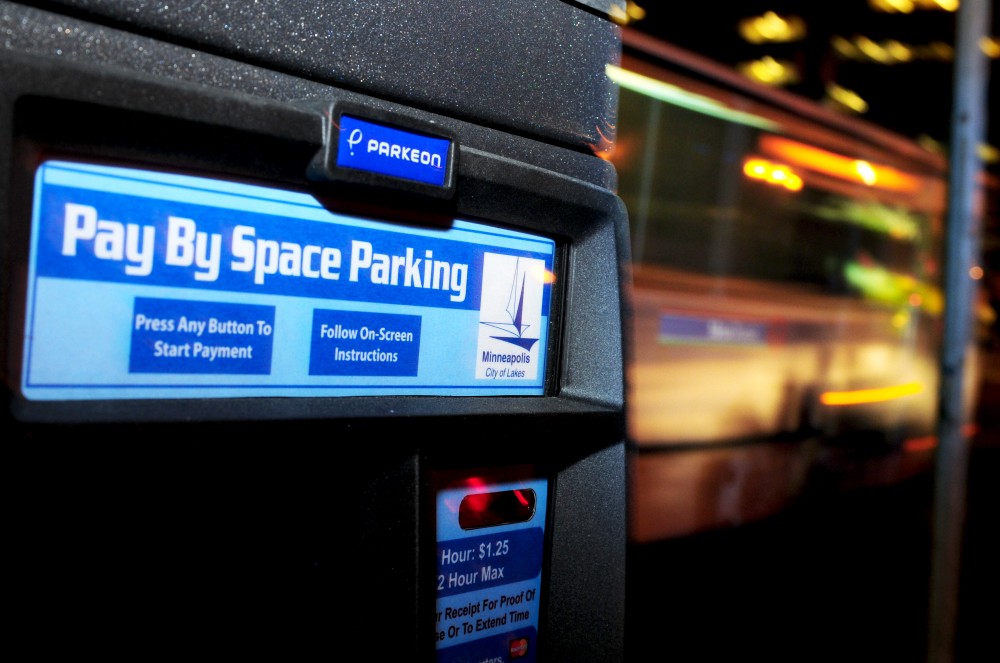Anyone whoâÄôs sick of feeding quarters into parking meters can rejoice âÄî the city is looking into new parking meter technology. The city is looking to replace its parking meters in the next few years and recently installed new test meters in locations around the city and near the University of Minnesota campus. Five parking meter systems from different vendors will be tested in five locations in the city. Four of the five test systems will take credit cards and three out of five are multi parking space meters. Two of the test locations include Stadium Village and Dinkytown. Across from the Radisson University Hotel on Washington Avenue, test meters have already been installed, but arenâÄôt up and running yet, said Matt Laible, spokesman for the City of Minneapolis. The new meters on Washington Avenue look more like ATMs, but are actually multi-space meters that allow users to pay with a credit card. Instead of having one or two meters per parking spot, multi-space meters cover five to ten parking spots. Users select their spot and how long they plan to park. They can then pay with a credit card. In Dinkytown, another multi-space technology is being tested, but so is a new single-space meter. The single-space meters are up and running, and work similarly to the cityâÄôs current meters. These meters take coins and a new smart card. Tim Drew, traffic engineer with the city, said the new smart cards may be something users can purchase online or at stores. They might also work for parking ramps, he said. The city currently has a parking card that can be used on the old meters, but Laible said theyâÄôre inconvenient because you have to buy and charge them separately. Testing meters are also in the Warehouse District and near St. Anthony Main. Single-space meters in the Warehouse District will take coins, credit cards and smart cards. The city hopes to have all the test meters up and running by Dec. 1, and testing will last about six months. In July, the city requested proposals from parking meter vendors. The five vendors are bidding for a contract with the city, so they covered all the costs of equipment. In May, a final recommendation will be sent to the city council for approval. Throughout the testing period, Drew said the city will monitor areas to see how people like the new meters. The city will also be looking at how the meters hold up through winter, and will factor in the cost of equipment and ease of installation. The present on-street system includes about 6,500 single-space meters that accept coins and parking cards. The meters were purchased in 1992, and are approaching the end of their useful life, according to city documents. Rate increases over the years have made coin payment less than optimal, Drew said. âÄúI have actually heard of people carrying around bags of quarters,âÄù he said. Other problems include malfunctioning coin acceptors and lost revenues due to failed meters. Meters generate about $7.2 million a year, which is placed directly back into the cityâÄôs parking fund. Mary Sienko, spokeswoman for Parking and Transportation Services, said the University has looked into new parking meter technology as well, but future finances will decide whether new meters will come to the University any time soon.

Image by Marija Majerle
New parking meters that accept credit cards are being tested out in locations around Minneapolis including Dinkytown and Stadium Village. The city hopes to have all the meters up and running by December 1, and testing will last about six months.
City is looking into new parking meter technologies
Published November 24, 2008
0
More to Discover







